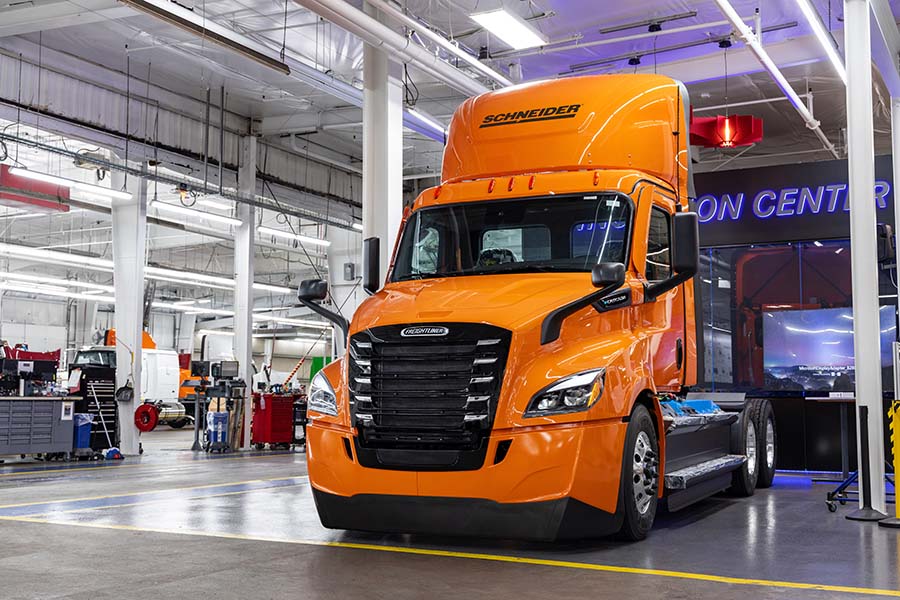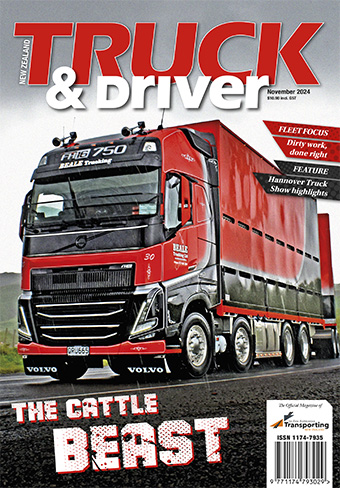Aeolus Truck & Driver News


Can America go electric?
Aeolus Truck & Driver News
Electrifying long-haul trucking across the United States would require more than 10% of the electricity generated in the country today and require massive infrastructure investment.
Research by the American Transportation Research Institute (ATRI) has assessed the infrastructure requirements for converting the U.S. fleet to battery electric vehicles (BEVs).
ATRI’s Research Advisory Committee, focused on U.S. electricity supply and demand, electric vehicle production and charging requirements. The study found that full electrification of the vehicle fleet would require a large percentage of present U.S. electricity generation.
Electrification of domestic long-haul trucking would consume 10.4% of electricity production and the figure rises to 14% when short haul freight is included. BEV vehicles replacing the entire US vehicle fleet (passenger and commercial) would use 40.3% of electricity generation capacity.
Regional analysis shows some individual states would need to generate as much as 60% more electricity than is presently produced. California, for example, would require 57.2% of its electric capacity to power an electric vehicle fleet.
...Electrifying long-haul trucking across the United States would require more than 10% of the electricity generated in the country today and require massive infrastructure investment.
Research by the American Transportation Research Institute (ATRI) has assessed the infrastructure requirements for converting the U.S. fleet to battery electric vehicles (BEVs).
ATRI’s Research Advisory Committee, focused on U.S. electricity supply and demand, electric vehicle production and charging requirements. The study found that full electrification of the vehicle fleet would require a large percentage of present U.S. electricity generation.
Electrification of domestic long-haul trucking would consume 10.4% of electricity production and the figure rises to 14% when short haul freight is included. BEV vehicles replacing the entire US vehicle fleet (passenger and commercial) would use 40.3% of electricity generation capacity.
Regional analysis shows some individual states would need to generate as much as 60% more electricity than is presently produced. California, for example, would require 57.2% of its electric capacity to power an electric vehicle fleet.
ATRI’s analysis also quantified the tens of millions of tons of cobalt, graphite, lithium and nickel that will be needed to replace the existing U.S. vehicle fleet with BEVs, placing high demand on raw materials and with the mining and processing resulting in significant CO2 emissions.
Depending on the material, electrification of the U.S. vehicle fleet would require 6.3 to 34.9 years of current global production. This is the equivalent of 8.4% to 64.4% of global reserves for just the U.S. vehicle fleet.
It was also found that charging the nation’s long-haul truck fleet will prove challenging, partially due to the ongoing truck parking crisis. Current technology will necessitate more chargers than there are truck parking spaces in the U.S., with hardware and installation costs of US$112,000 per unit, or more than US$35 billion system-wide.
As an example of the parking challenges involved with BEV charging, ATRI quantified the charging needs at a single rural rest area as being equivalent to the daily electricity needs of 5,000 households.
“Carbon emissions reduction is clearly a top priority of the U.S. trucking industry, and feasible alternatives to internal combustion engines must be identified,” says Srikanth Padmanabhan, President, Engine Business, Cummins Inc.
“ATRI’s research demonstrates that vehicle electrification in the U.S. will be a daunting task that goes well beyond the trucking industry – utilities, truck parking facilities and the vehicle production supply chain are critical to addressing the challenges identified in this research. Thus, the market will require a variety of decarbonisation solutions and other powertrain technologies alongside battery electric.”
Beyond BEV automobiles, the report concludes that while there are certain applications for BEV trucks, a completely new charging infrastructure is critical to increasing BEV truck adoption by the trucking industry. Furthermore, the research documents that existing raw material mining for BEV batteries will likely need to be re-sourced with an emphasis on domestic mining and production.
ATRI is the trucking industry’s not-for-profit (501c3) research organisation. It is engaged in critical research relating to maintaining a safe, secure, and efficient freight transportation system.




 + EQUIPMENT GUIDE - FREE
+ EQUIPMENT GUIDE - FREE
